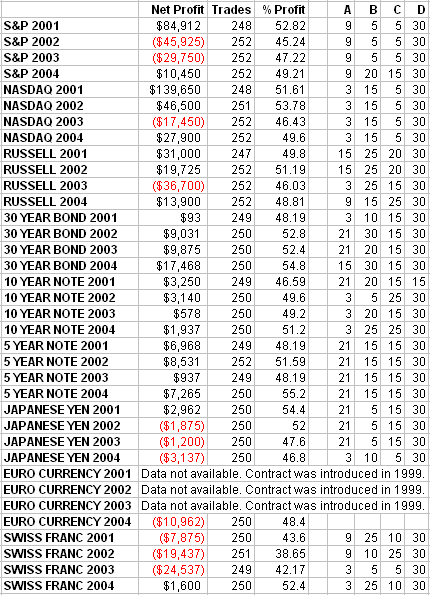Please note that there were errors in the data output when this article was originally published on March 22. The errors in the data have been corrected, and the accompanying text has been updated to reflect those changes.
In our last episode, we demonstrated that very positive one year "future" results could be projected via optimizing five years of prior data. Here are the results of doing the same with the four-out-of five indicator. Although for now, we're going back to a simple three-out-of-five-majority indicator, guaranteeing one trade pretty much every day (click here to review).
For logistical reasons of not clogging up our optimization fields, we'll keep the rather robust two moving averages (2 and 5) of the first indicator constant. The end columns represent the remaining four components.
A. The number of days you look at in determining the order of the extreme high/low closes.
B. The number of days used in the closing average compared to yesterday's close.
C. The size of the field of median daily prices and how yesterday's close relates.
D. The number of days in the average range used as a comparison to yesterday's range size and close.

As you can see, we get widely divergent, albeit still profitable, results with this idea. This is an example of how the best laid theoretical plans aren't always what we expect or hope for. Perhaps this is a signal that the Swiss franc does not nicely lend itself to our trading universe. It's maybe not such an arbitrary decision, because the volume of the contract is low compared to the rest of our sample.
There is hope for combining our indicators. It's just not going to be any slam dunk any more than anything else in research is. Stay tuned.
P.S. I'd love to receive feedback from you. Please leave a comment or discuss the article by clicking on "Make a comment on this article" below.
Art Collins is the author of Market Beaters, a collection of interviews with renowned mechanical traders. He is currently working on a second volume. E-mail Art at artcollins@ameritech.net.